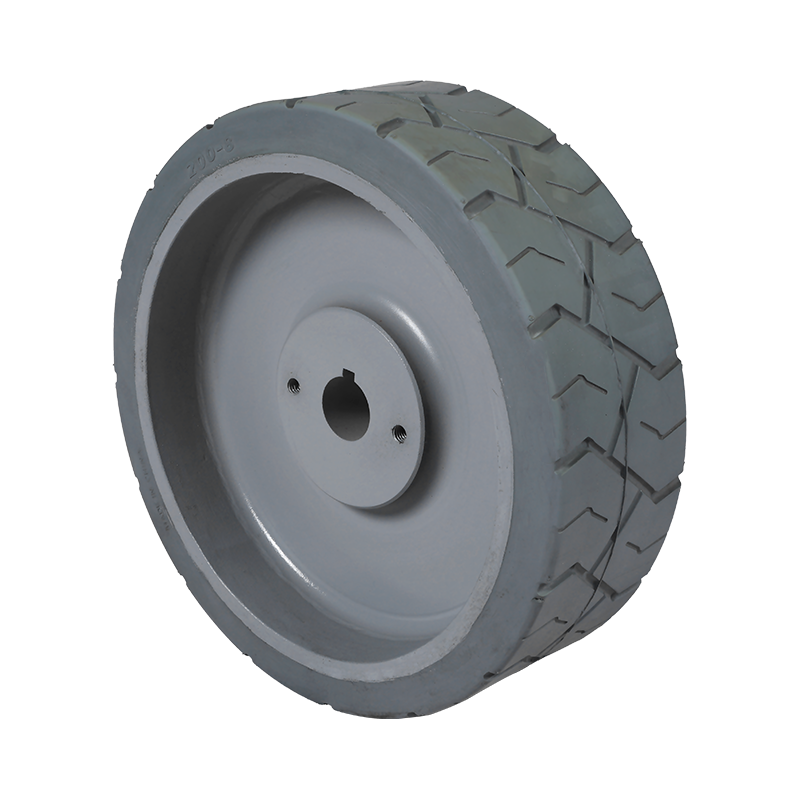Understanding Scissor Lift Tires: Types, Applications, and Maintenance Tips
Scissor lifts are indispensable tools across a variety of industries, from construction and maintenance to warehousing and event management. These versatile machines allow workers to reach elevated spaces safely and efficiently. While much attention is often paid to their hydraulic systems, platforms, and safety features, one critical component that plays a significant role in their performance is often overlooked: the tires. Scissor lift tires may seem like a minor detail, but they are fundamental to the machine's stability, mobility, and overall functionality.
The Importance of Scissor Lift Tires
Tires are the point of contact between the scissor lift and the ground, making them essential for ensuring both safety and efficiency. Whether the lift is being used indoors on smooth concrete floors or outdoors on uneven terrain, the right tires can make all the difference. Poor-quality or improperly chosen tires can lead to reduced traction, increased wear and tear, and even accidents. Understanding the different types of scissor lift tires and their specific applications is key to maximizing the performance of these machines.
Types of Scissor Lift Tires
There are several types of tires commonly used on scissor lifts, each designed for specific environments and tasks. Here’s a closer look at the most common options:
1. Solid Non-Marking Tires
These tires are made from solid rubber and are specifically designed for indoor use. As their name suggests, they do not leave marks or scuffs on floors, which makes them ideal for environments like warehouses, hospitals, and retail stores where floor cleanliness is crucial. Solid non-marking tires are puncture-proof and offer excellent durability, but they can be heavier than other types, which might slightly affect the lift's mobility.
2. Pneumatic Tires
Pneumatic tires are air-filled and provide excellent shock absorption, making them suitable for outdoor use on rough or uneven surfaces. They offer better traction compared to solid tires, which is vital when operating on loose soil, gravel, or muddy terrain. However, they are prone to punctures, which can be a significant drawback in environments with sharp debris or harsh conditions.
3. Foam-Filled Tires
A hybrid option, foam-filled tires combine the benefits of pneumatic and solid tires. They are filled with polyurethane foam instead of air, making them puncture-resistant while still providing some level of cushioning. Foam-filled tires are an excellent choice for outdoor applications where the risk of punctures is high but a smoother ride is still desired.
4. Rough-Terrain Tires
For scissor lifts used in demanding outdoor environments, rough-terrain tires are the go-to option. These tires have deeper treads and are built to handle challenging surfaces such as rocky ground, sand, and steep inclines. They are typically found on larger scissor lifts designed for heavy-duty tasks.

Factors to Consider When Choosing Scissor Lift Tires
Selecting the right tires for a scissor lift involves considering several factors:
Surface Type : The primary consideration should always be the type of surface the lift will operate on. Indoor applications call for non-marking tires, while outdoor jobs require more rugged options.
Load Capacity : The weight the scissor lift needs to carry will influence tire choice. Heavier loads may require more robust tires to ensure stability and prevent blowouts.
Environment : If the lift will be used in areas with sharp objects, foam-filled or solid tires are preferable to avoid punctures. For clean environments, non-marking tires are essential.
Mobility Needs : Some jobs require frequent movement of the lift, while others involve stationary use. Tires with better rolling resistance may be needed for dynamic applications.
Budget : While solid and foam-filled tires tend to be more expensive upfront, their longevity and resistance to damage can make them more cost-effective in the long run.
Maintenance Tips for Scissor Lift Tires
Proper maintenance of scissor lift tires is crucial to extend their lifespan and ensure safe operation. Here are some tips:
Regular Inspections : Check tires for signs of wear, cracks, or embedded debris before each use. Early detection of issues can prevent costly repairs or replacements.
Pressure Checks : For pneumatic tires, maintaining the correct air pressure is essential. Underinflated or overinflated tires can compromise performance and safety.
Cleaning : Keep tires clean, especially if they are used in environments with dirt, oil, or chemicals. This prevents degradation of the rubber material.
Rotation : If the lift is used heavily on one side or in a specific pattern, rotating the tires periodically can promote even wear.
CONTACT US
-

Email: SMT001@saimeite-tyre.com
-

Phone: +86-18451337018No. 1, Renmin South Road, Yandu District, Yancheng City, Jiangsu Province, China

 English
English 한국어
한국어 Français
Français Español
Español











